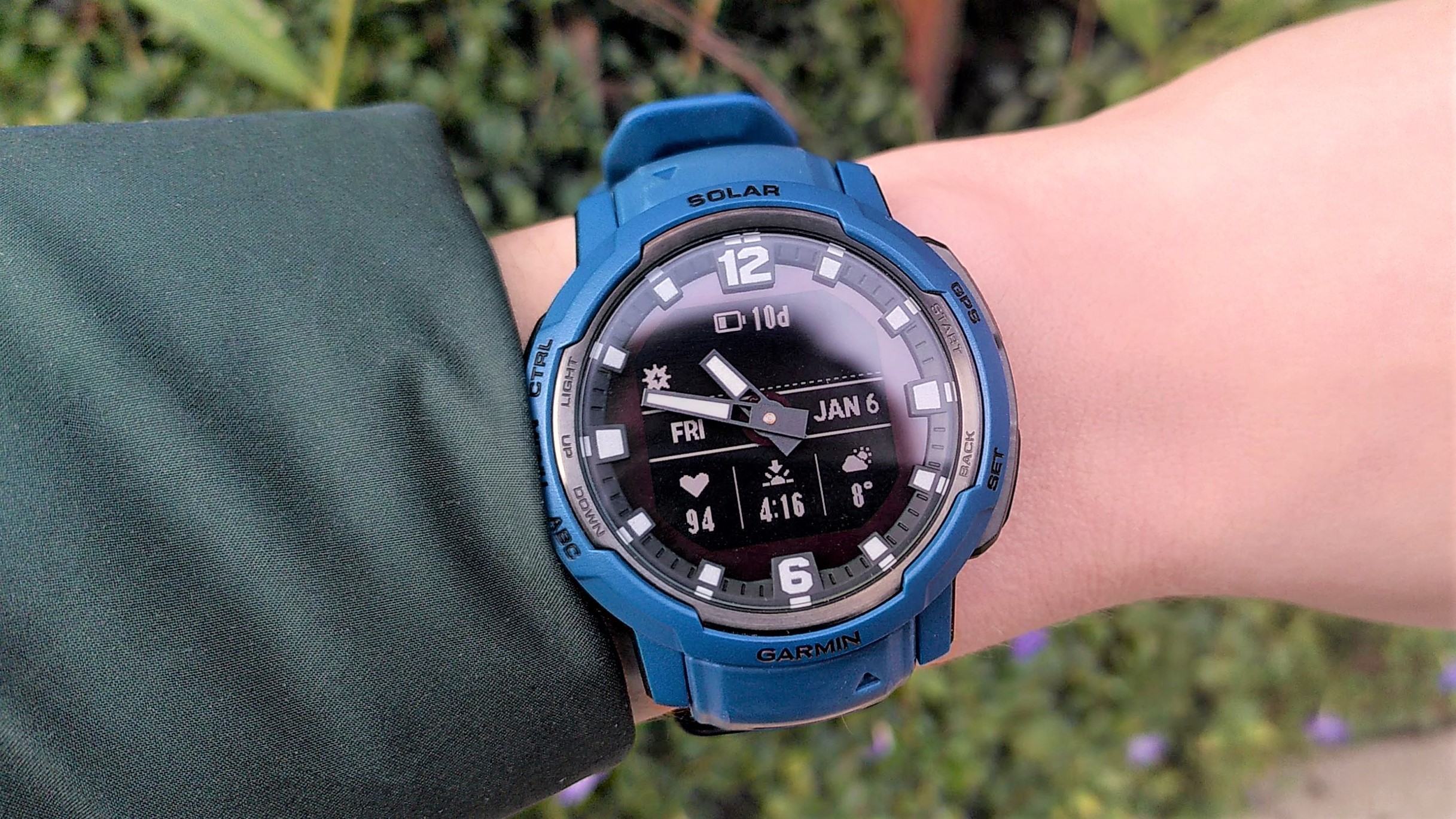Advnture Verdict
If you're looking for a GPS watch that's a bit fun and different, the Garmin Instinct Crossover is well worth a look. It's as accurate and tough as any Instinct watch, and the analog hands are a practical, useful addition. The only real downside is that, although you can transfer maps to the Crossover, the hole in the center of its face means you don't get the full picture.
Pros
- +
Fun and different design
- +
Well executed hybrid display
- +
Excellent battery life
- +
Accurate location tracking
Cons
- -
Display isn't great for maps
- -
Lacks multi-band GPS
You can trust Advnture
Garmin Instinct Crossover: first impressions
The Garmin Instinct Crossover shares a lot of DNA with other watches in the Instinct series, featuring a chunky resin case, monochrome memory-in-pixel display, and fantastic battery life. The big difference is the addition of analog hands, which sit on top of the digital display and move smoothly out to the three and six positions when you want to view your daily health stats or start tracking an activity.
• List price: $499.99 / £479.99 (standard), $549.99 / £529.99 (solar), $599.99 / $569.99 (tactical)
• Case size: 54mm
• Weight: 65g (with silicone band)
• Display type: Memory-in-pixel
• Water rating: 100m
• Best use: Road running, gym work, cycling, swimming
The case is the same diameter as that of the Garmin Instinct 2 (45mm), but thicker due to the need to accommodate the hands (16.2mm compared to 14.5mm).
It's available in both standard and solar models (as tested here). The addition of Garmin's photovoltaic power glass increases the price a little, but extends the watch's battery life considerably. That's a real boon if you're planning a long trip off-grid, or like me, you're just disorganized.
There's also a Tactical Edition, with additional features like a kill-switch that instantly turns off all wireless communications, plus Power Glass.
The regular edition comes in black and blue granite colorways, while the solar model is available in black and tidal blue (shown here). The Tactical Edition comes only in black.
It's undeniably chunky, but that's part of the appeal, and has drawn favorable comparisons with Casio G-Shock watches. It's only a shame that it doesn't come in the same array of bright and interesting colors as the Instinct 2.
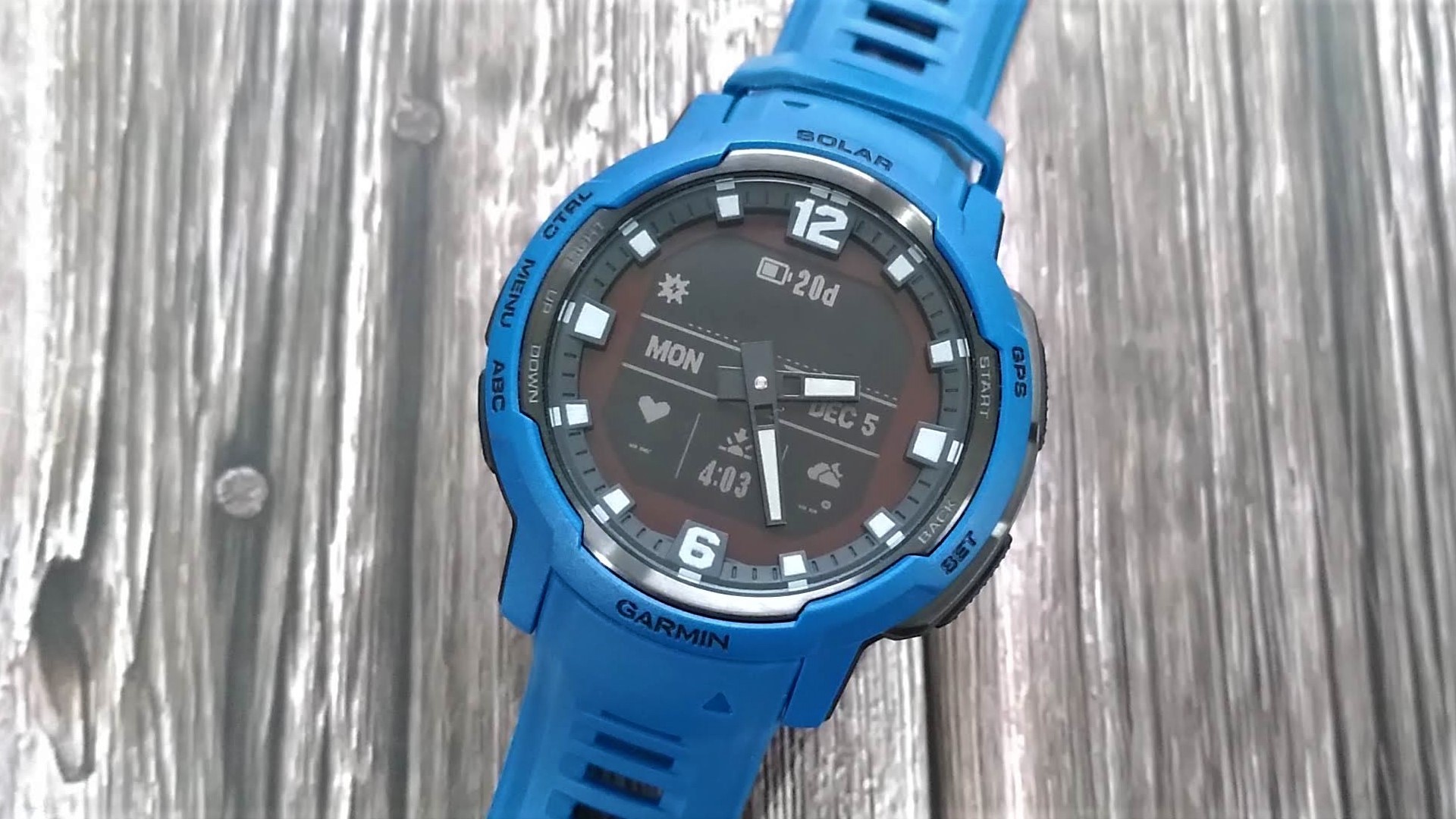
The Crossover has exactly the same five-button layout as the Instinct 2 and most other Garmin watches, and as you'd expect from a hybrid watch, there are no touch controls. Tapping at the hands wouldn't be very useful.
The top left button operates a blue LED backlight, but the hands and hour markets are also coated with lume that glows pretty brightly in a darkened room, reducing the need to use the light and allowing you to eke out a little extra battery life.

Flip the watch over and you'll find the optical heart rate monitor (plus SpO2 sensor) and Garmin's usual charging port. The Instinct Crossover uses the same proprietary USB charging cable as all the company's recent watches, and it attaches as easily and firmly as ever,
The Instinct Crossover supports three satellite navigation systems (GPS, Galileo, and GLONASS), helping it pinpoint your location more accurately anywhere in the world. However, unlike some of the company's other watches, it doesn't have multi-band GPS, so it's likely not going to deliver the pinpoint accuracy of the Forerunner 255, Forerunner 955, or Fenix Sapphire Solar to name a few examples.
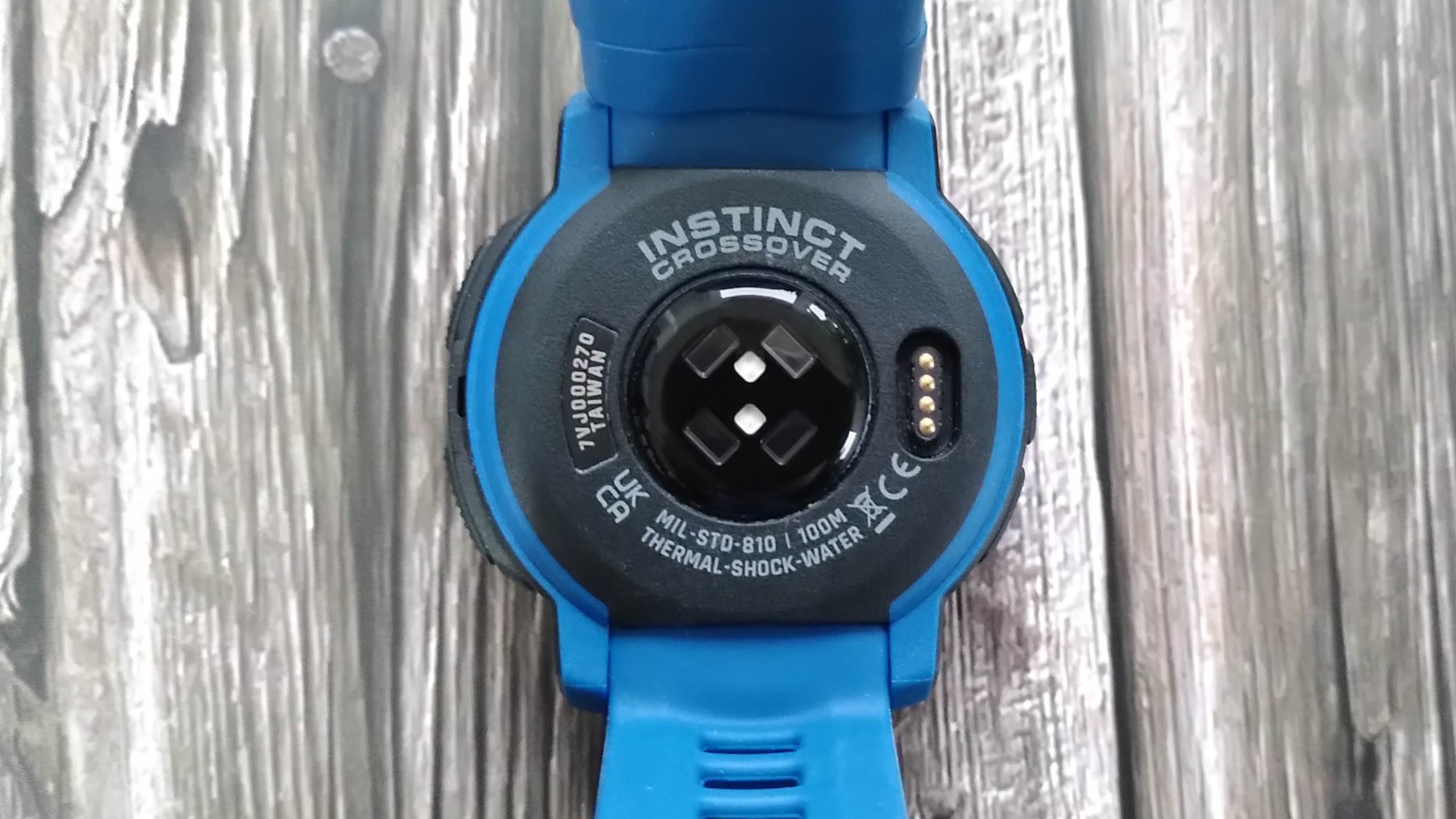
When it comes to workout tracking, there's the usual wide array of supported activities, and the Instinct Crossover will capture relevant data for each one. For example, if you go kayaking, the watch won't just track distance and time, but also paddle strokes, and strokes per minute.
Runners are particularly well catered to, and the Instinct Crossover can track many metrics that would once have required a separate Running Dynamics Pod. Running power, stride length, ground contact time, and vertical oscillation are all calculated from the wrist, giving you a rounded picture of your running gait that you can use yourself, or share with a coach.
There's a multisport option for events like triathlons and duathlons, and interestingly, a pretty comprehensive set of golfing features that rivals many dedicated golf watches. It's even tournament legal.
Garmin Instinct 2: on the road
First off, the Instinct Crossover is fun, and it's attracted a lot of attention from other runners while I've been testing it. In a raft of similarly styled GPS watches, it's a breath of fresh air. It's also surprisingly usable, and a lot of thought has been put into how it'll work in regular use.
This isn't Garmin's first analog/digital hybrid watch; after all, the Vivomove series has been around since 2019. However, Vivomove watches are designed for everyday fitness and general wear, not serious sports tracking and rough treatment. The Instinct Crossover has a new feature called Revodrive, which automatically recalibrates the hands if you give the watch a good whack. I'm not sure how hard you'd have to hit it, but after about a month of testing and some clumsiness, my review sample is still telling perfect time. The hands haven't shifted off-course at all.
Cramming heaps of health data onto a relatively low resolution display that's bisected by a large pair of hands must have been a tricky challenge for Garmin's software engineers, but they have found a neat solution. The currently selected menu item is placed above the hands in a slightly larger font, with subsequent options shown below.
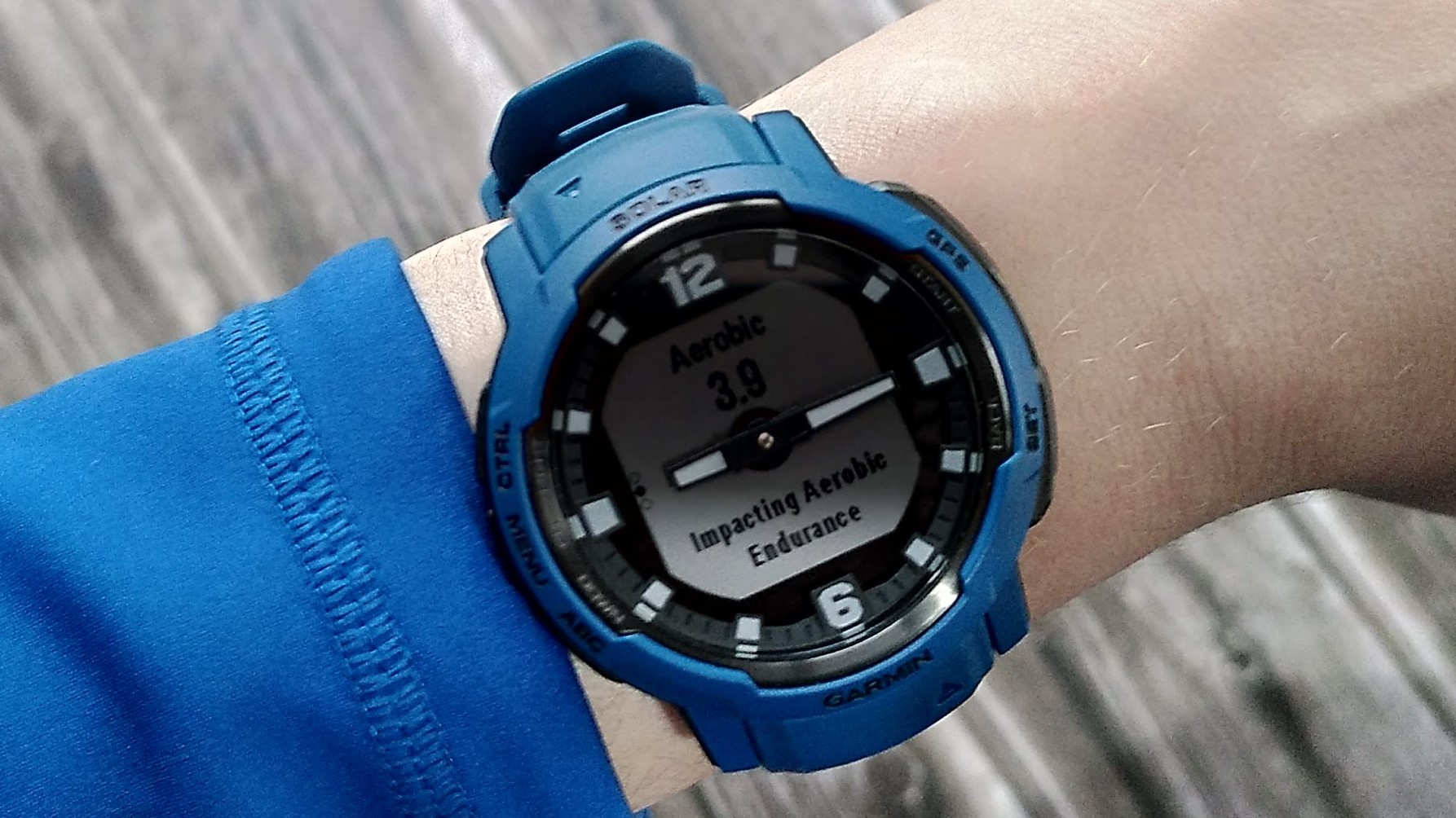
Unfortunately the nature of the display means the Instinct Crossover isn't well suited to maps and navigation. You can transfer maps to the watch, but there's no getting around the fact that there's a sizeable hole right in the middle. Navigating with an Instinct 2 isn't a fantastic experience (the monochrome screen just can't show enough detail) but with the Crossover it's even more awkward.
If you want a Garmin watch for exploring new routes, I highly recommend opting for one with the largest color display possible. The Enduro, Enduro 2, Epix (Gen 2), or Fenix 7X are all great options.
GPS accuracy isn't a worry, though. Despite the lack of multi-frequency GPS, during my tests the Instinct Crossover's location tracking proved excellent. It always established a lock quickly, and tracked my distance to within 30m in a measured and chip-timed 10km road race,
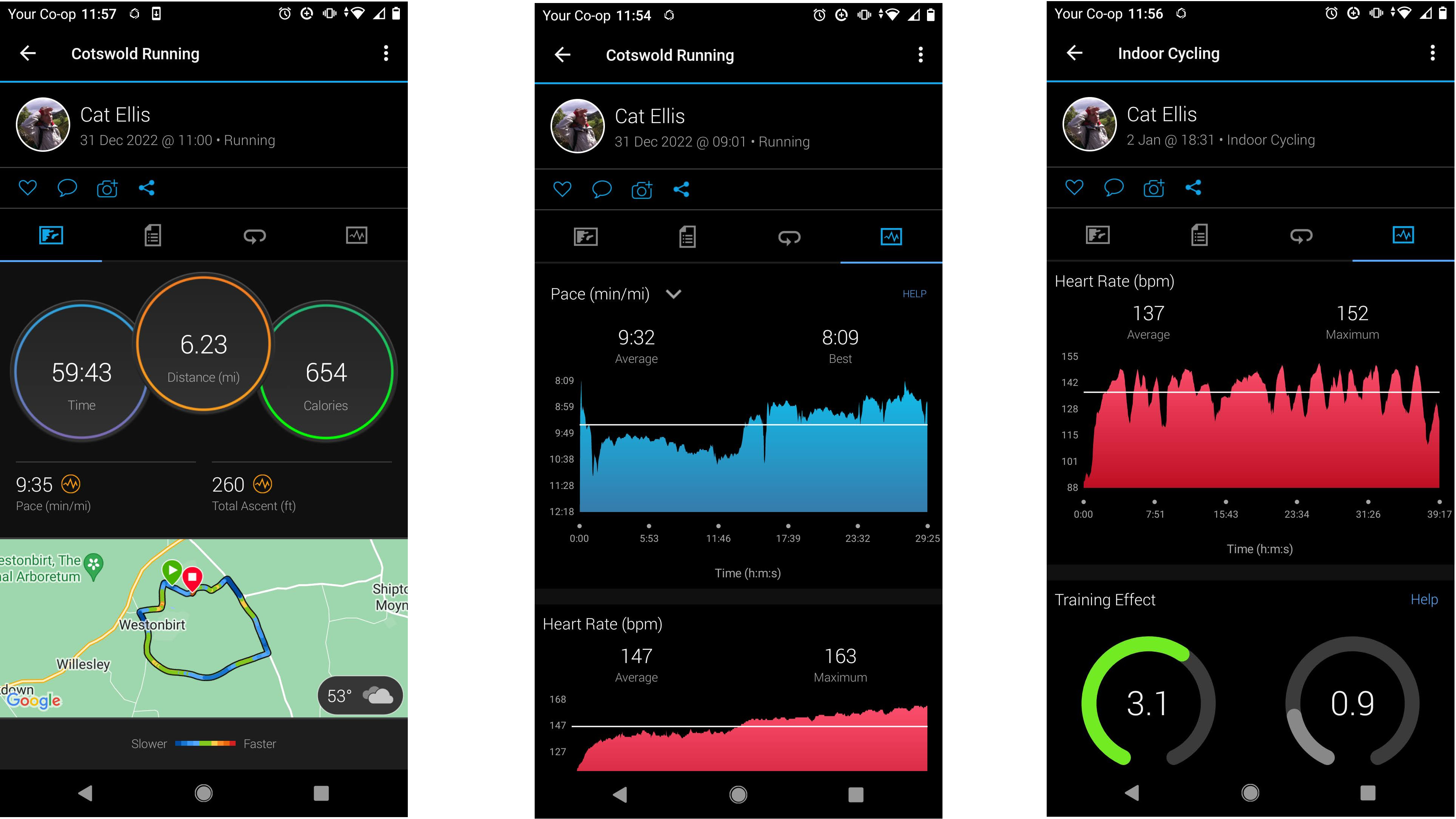
Battery life is outstanding. Garmin's own specs claim that the regular Instinct Crossover will last for up to 28 days between charges in smartwatch mode, and 25 hours with GPS tracking enabled. Adding solar charging boosts that to 70 days in smartwatch mode, or 31 hours in GPS mode.
I've been testing the solar edition for around a month, and have charged it twice during that time, with only weak winter sun and a GPS tracked activity every other day. According to the face, I still have another 10 days of battery life left. It's extremely impressive.
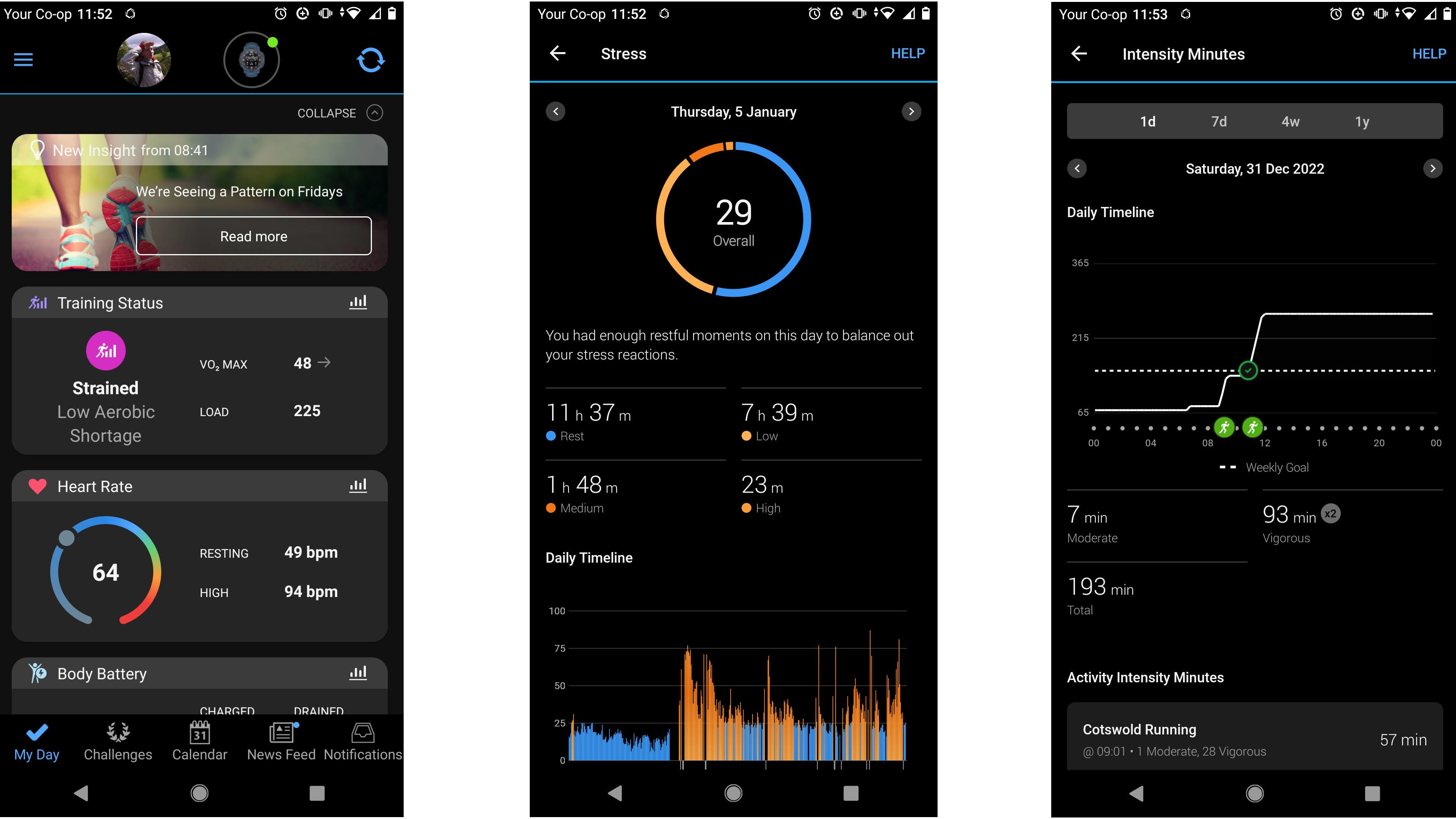
Like all Garmin watches, workout and general health data captured by the Instinct Crossover syncs with the Garmin Connect mobile app, and is transferred immediately provided your phone is within Bluetooth range (unlike some other sports watches, which have to be synced manually).
The Instinct Crossover's monochrome digital display, with its relatively small size and central cutout, isn't able to show as much detail as new Fenix and Forerunner watches, so you'll need to dip into the app more frequently to check your stats. Thankfully, everything is clearly laid out, and you can skim through a quick overview of your daily or weekly wellbeing, or drill down for detailed insights.
The Connect app is also the place to plan routes, set up training plans, connect with friends, and join challenges to earn virtual badges. Best of all, everything is free to use, with no subscription fees to unlock advanced features. The Instinct Crossover is a mid-priced GPS watch, but towards the more expensive end, so it's reassuring to know you won't be faced with additional fees on top.
- Best Garmin watches: all the latest models tested and rated

Cat is Homes Editor at TechRadar and former editor of Advnture. She's been a journalist for 15 years, and cut her teeth on magazines before moving online. She helps readers choose the right tech for their home, get the best deals, and do more with their new devices.
